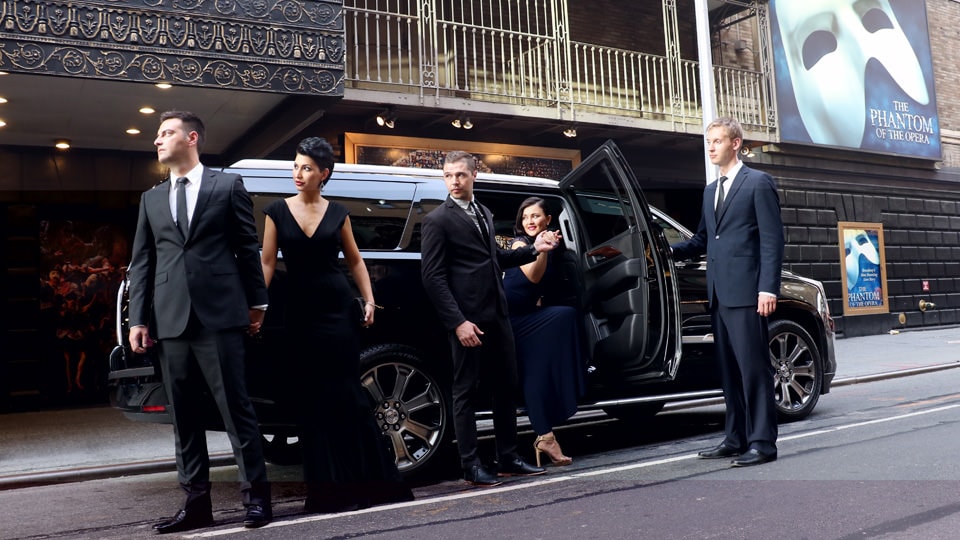20 Top Pieces Of Advice For Deciding On Employee Shuttle Websites
20 Top Pieces Of Advice For Deciding On Employee Shuttle Websites
Blog Article
The 10 Best Tips For Selecting The Best Size Of Vehicle And Its Capacity In The Case Of Employee Shuttles
Here are 10 great tips for capacity and car selection for employee shuttle transportation:
1. Determine Employee Transportation Needs
Start by conducting a thorough analysis of your employee base to determine the number of employees that will use the shuttle service regularly. Consider factors such as the size of your workforce, shifts of work and peak usage times. This will enable you to choose the best vehicle capacity to meet your needs and ensure that shuttles are able to accommodate different numbers of passengers.
2. Select the right type of vehicle
Depending on your shuttle's needs and the number of employees you have, you may choose a vehicle that are suitable for. Minibuses are readily available, along with buses and vans that are larger. Minibuses are a good option to accommodate small groups, and they're able to maneuver through smaller spaces. Larger buses are best for large groups. Consider the vehicle's layout and whether it provides enough seating space and comfortable seating for luggage, especially if employees carry bags or other equipment.
3. Evaluate Fuel Efficiency
Fuel costs can have a significant impact on the budget allocated for shuttle services. To cut down on operating costs, choose vehicles that use less fuel. Electric or hybrid vehicles are also to be considered, as they can provide long-term savings, while also aligning with the sustainability objectives. When you compare the fuel efficiency of different models it is possible to make an informed decision that balances efficiency and capacity.
4. Take into consideration Accessibility Features
Check that the vehicle you select is compliant with accessibility requirements to accommodate employees with disabilities. This includes features such the wheelchair lift and low floors to make accessibility easier and a seating area for people with disabilities. Accessible transportation isn't just required by law however, it also helps to create an environment that is more inclusive.
5. Plan for expansion and flexibility
As businesses change and grow, their workforce size may also evolve. When selecting a vehicle be sure to consider the potential for growth in the future. When selecting vehicles, consider the potential for growth in the future.
6. Look for safety reviews, ratings, and features
Safety is the most important aspect of the transportation of employees. When selecting vehicles, research their safety ratings and features. Look for cars with the most advanced safety features such as antilock brakes and stability control. To safeguard employees, make sure the vehicle meets local and federal safety standards.
7. Check for reliability and maintenance
Select cars that are well-known for their low-maintenance costs and dependability. Vehicles that require regular maintenance could affect the operation of shuttles, and could result in employee discontent. To prolong the life of your car, research the reliability and maintenance schedules of each make and model.
8. Make use of GPS as well as Fleet Management Software
The implementation of GPS tracking and fleet management software could enhance the efficiency of your shuttle service. These tools provide live tracking of vehicles, which allows for the best routes to be determined according to traffic conditions or employee schedules. Using fleet management software, you can keep track of vehicle performance along with fuel consumption and maintenance needs.
9. Implement Feedback Mechanisms for Employees
Inspire your employees to participate by utilizing questionnaires or suggestion bins to provide feedback about the comfort of their vehicles. Understanding their experiences helps find issues with overcrowding and seating comfort. Regularly reviewing feedback from passengers will help make the necessary adjustments to the vehicle or other services to ensure a pleasant transportation experience.
10. Estimate the total cost of Ownership
The total cost of ownership, or TCO is comprised of the cost of purchase, maintenance costs, insurance and depreciation. TCO analysis helps you make informed choices, which balances the initial investment with operational costs over the long term. The expenses of a car can be analyzed to determine whether it is in line with the budget while maintaining its the reliability and capabilities.
These tips will assist you in selecting the most suitable vehicles for the employee shuttle service and to manage the capacity. You will be able to provide a comfortable and safe service. Take a look at the most popular employee shuttle recommendations for more info including los angeles airport shuttle, new york airporter, shuttle service near me, transportation to airport, shuttle for the airport, transportation to airport, private car service near me, airport transportation near me, airport bus shuttle, airport transportation services and more.
Top 10 Tips For Customer Service And Communication In An Event Transportation Service For Corporate Events
Here are 10 suggestions for improving communication and customer service for corporate event transport service.
1. Create a dedicated transportation coordinator
Appoint a transportation coordinator to manage all aspects related to the transportation of your event. This individual should be the primary point of contact for all transportation-related inquiries, ensuring that attendees have access to timely and accurate information. The presence of a designated coordinator improves communication and improves the overall experience for customers.
2. Provide Clear and Comprehensive Information
Communicate all necessary transportation details to attendees prior to the date of the event. Include pickup locations, schedules, along with the vehicle kinds and contact information for the coordinator. This will allow attendees to better plan their journey and reduce confusion on the actual day.
3. Utilize Multiple Communication Channels
Make use of different communication channels to get the word out to attendees. This can include emails, mobile app, event websites as well as printed material. Different attendees might prefer different methods of communication, so utilizing multiple channels will ensure that the information is accessible and improves the chances that everyone is aware.
4. Create a Transportation FAQ
Create a frequently asked questions (FAQ) document that addresses the most frequent concerns and questions related to transportation. This document can contain details on accessibility concerns, lost objects, emergency numbers and other pertinent subjects. An FAQ can help cut down on the number of customer inquiries and improve the overall customer experience.
5. Offer real-time updates
Set up a system to provide attendees with live updates on transport schedules and any possible changes. You can use mobile apps or text messages to alert attendees. Real-time updates are an excellent method to keep your attendees current and to manage expectations.
6. Train Drivers on Customer Service Skills
Train drivers working in customer service. The drivers must be courteous and approachable. They should also have an understanding of the occasion. Good interactions between drivers and attendees can enhance their overall experience, and make them feel valued.
7. Get feedback at the event
Encourage attendees to give feedback on the transport they had at your event. This can be done through short surveys, comment cards, or informal conversations. In real-time, feedback can lead to immediate improvement and shows the commitment to improving customer service.
8. Make sure that everyone has access to the facility.
Transmit clearly the accessibility features provided by the service. Be sure that the vehicle is accessible to people with disabilities and that accessibility information is easily accessible. Making accessibility a priority will help you show your dedication towards inclusion. This will improve the overall experience for all.
9. Follow up after the Event
You can follow-up with the participants following the event's conclusion to say thank you and collect feedback on their experience with transportation. You can use email surveys or thank you cards to accomplish this. When you follow up, you show the attendees that you value and appreciate their opinions.
10. Learning Lessons Learned and Documenting them to Prepare for Future Events
Note the lessons you've learned about customer service and communication for the future. Utilize these lessons to improve your strategy for future events. Continuous improvement in your customer service methods will result in better experience for guests and higher overall satisfaction.
If they follow these guidelines businesses can enhance communication and provide better service to their clients for corporate transportation for events. Prioritizing a clear communication as well as a dedicated customer service and responsiveness feedback mechanisms will ensure an enjoyable, seamless experience for event attendees. A company that provides exceptional customer service will stand apart in a crowded marketplace and build relations with guests. Read the recommended extra resources about corporate event transportation for website tips including vehicular transport, vehicular transport, transport mgmt, vehicular transport, transportation management system, transportation companies near me, transportation industry, specialized transportation inc, global logistics co, safe transportation and more.